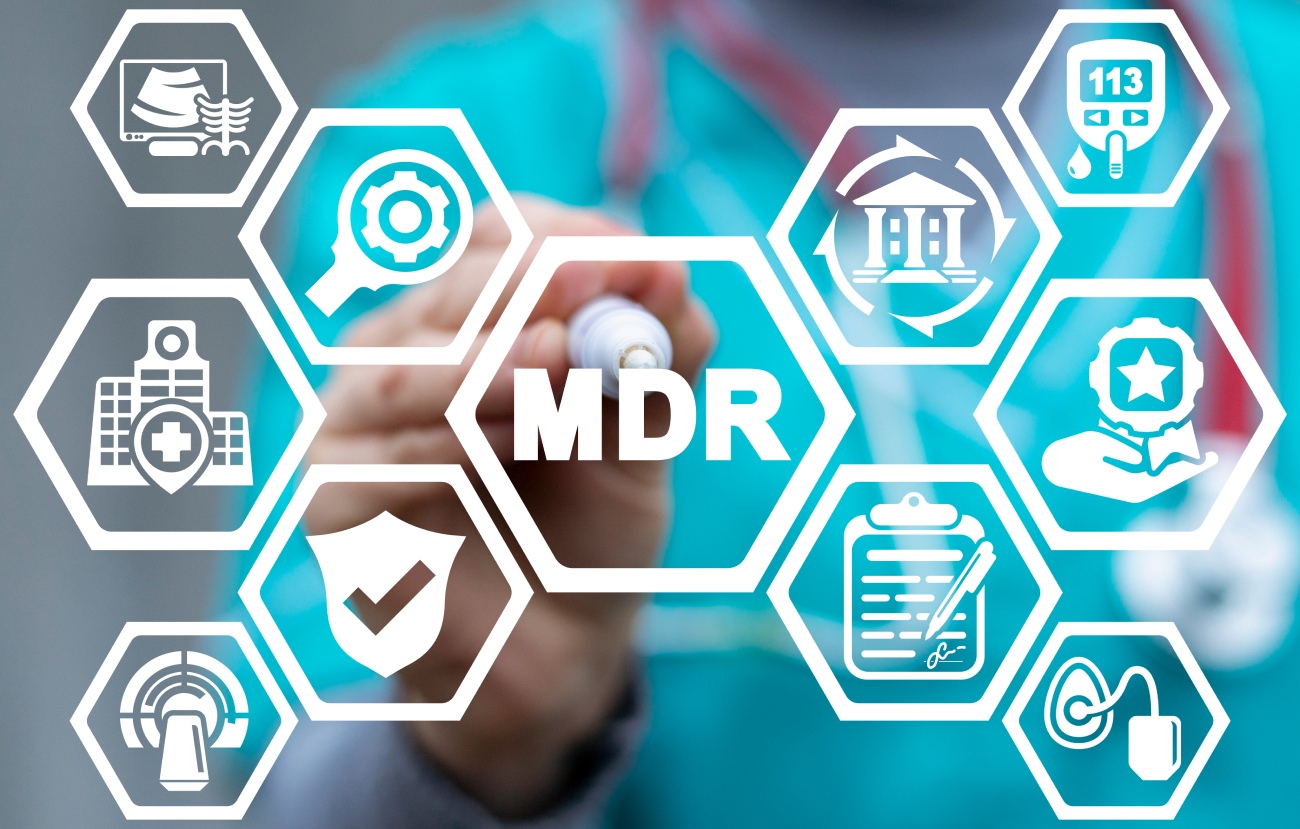
EU transitioning from the old Medical Device Directive to the Medical Device Regulation
This article aims to provide a concise and clear overview of data derived from the biomaterial lifecycle, sources in which the data can be found, and their main features, capabilities and limitations (Figure 1). This overview provides an important basis for the development of a database and marketplace for biomaterials.
The European Union’s (EU) new Medical Device Regulation (MDR) has been in force for the last five years, but according to some positions, Europe’s competitiveness might be challenged under the new MDR.
During the month of April 2022, a survey [1] was commissioned by the Medical Device Coordination Group (MDCG) Task Force on Certification Capacity Monitoring to assess the availability of Medical Devices in 2022 in connection to the Medical Device Regulation (MDR) implementation.
The responses revealed challenges and some interesting facts, summed up as follows:
- The first MDR certificates were issued in 2019, and only 69,239 devices have been certified to the MDR in the past three years.
- MDR certificates have not yet been issued for over 85% of the more than 500,000 devices previously certified under the old Medical Device Directive or the Active Implantable Medical Device Directive.
- The time-to-certification with MDR-designated Notified Bodies is slow and may take about 13-18 months, considering all devices and company sizes for the initial certification. Take note, this timeline is approximately twice as long as it used to be under the old Directive.
- 54% of survey respondents said they do not intend to transition some of their portfolios to the MDR.
- All product categories are impacted by potential device discontinuations, which could affect healthcare in Europe
- SMEs face more challenges in the MDR implementation than larger companies, and their progress toward MDR certification is slower than average. Up to 30% of SMEs have either no Notified Body (15%) and/or have a Notified Body that is not yet designated to the MDR (15%).
- The MDR has not supported innovation in the EU. Nearly half of the respondents are deprioritizing (or will do so) the EU market as the geography of choice for the first regulatory approval of new devices.
Meanwhile, the United Kingdom (UK), as a non-EU member since February 2020, will have its own regulations [2] and all medical devices placed on the UK market must be registered with the British Medicines and Healthcare products Regulatory Agency (MHRA), and carry a UKCA label from July 1st, 2023. In the case of Switzerland, Swiss Medtech’s position is that the country should not rely solely on the MDR system for supply – but expand its scope for action through increased usage of the U.S. Food & Drug Administration (FDA) system [3].

At her opening remarks at the EPSCO Council-Implementation of the Medical Devices Regulation on December 9th, 2022 [4], Commissioner Stella Kyriakides gave an overview of the situation mentioning that:
- The number of notified bodies has increased from 30 in June to 36 today for medical devices, and 8 bodies are designated to in vitro devices, one more than in June.
- The Medical Device Coordination Group adopted a list of 19 mitigating actions to increase notified body capacity and boost preparedness among manufacturers without lowering the requirements.
- Devices covered by around 23,000 certificates issued under the previous Directives have not yet transitioned to that Regulation and will expire by May 26th 2024 at the latest.
Moreover, considering the risks of shortages of life-saving medical devices for patients, the Commissioner proposed targeted amendments to facilitate an extension for the transitional period of the MDR and mitigate any short-term risk. As presented, the EU’s specific points of action include that:
- High-risk devices would get a new deadline of 2027.
- Medium and low-risk devices would be valid until 2028.
- The extension should be conditional on benefiting safe devices.
- The so-called sell-off date of May 2025 is removed to prevent safe medical devices already on the market from having to be discarded.
Moreover, SMEs and manufacturers of orphan and breakthrough devices are promised more support. In the words of the Commissioner, we must “shape a regulatory environment that fosters innovation and ensures that notified bodies are enabled to focus on the key task at hand, patient safety, and less bureaucracy” [4].
References
[1] MedTech Europe (2022). MedTech Europe Survey Report – Analysing the availability of Medical Devices in 2022 in connection to the Medical Device Regulation (MDR) implementation. [online] Available at: https://www.medtecheurope.org/resource-library/medtech-europe-survey-report-analysing-the-availability-of-medical-devices-in-2022-in-connection-to-the-medical-device-regulation-mdr-implementation/
[2] GOV.UK (2021). Regulating medical devices in the UK. [online] Available at: https://www.gov.uk/guidance/regulating-medical-devices-in-the-uk
[3] Holler, A. (2022). Swiss Medtech MDR Conference. [online] Available at: https://www.swiss-medtech.ch/en/news/swiss-medtech-mdr-conference
[4] European Commission (2022). Opening Remarks by Commissioner Stella Kyriakides at the EPSCO Council-Implementation of the Medical Devices Regulation. [online] Available at: https://ec.europa.eu/commission/presscorner/detail/en/SPEECH_22_7627